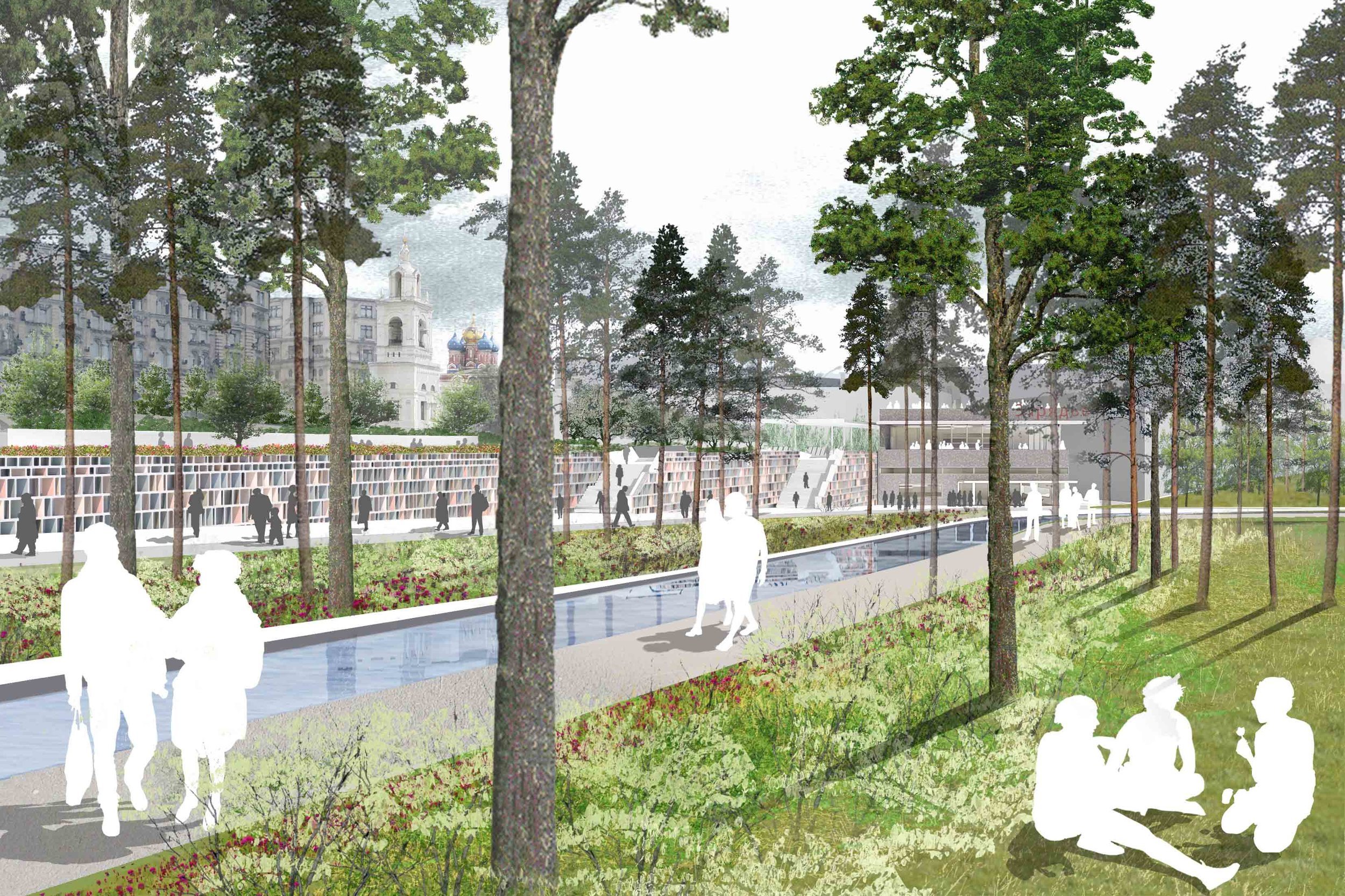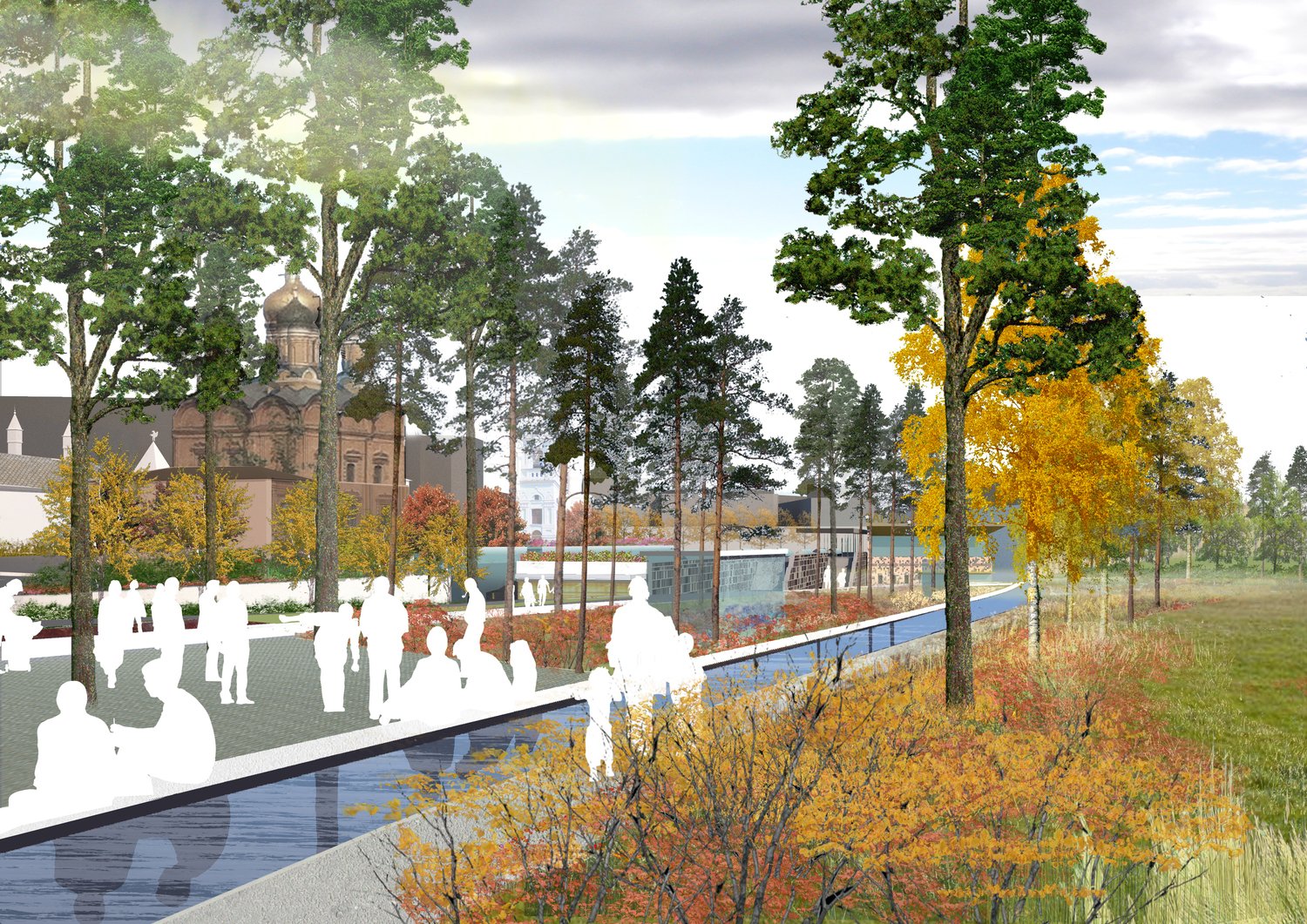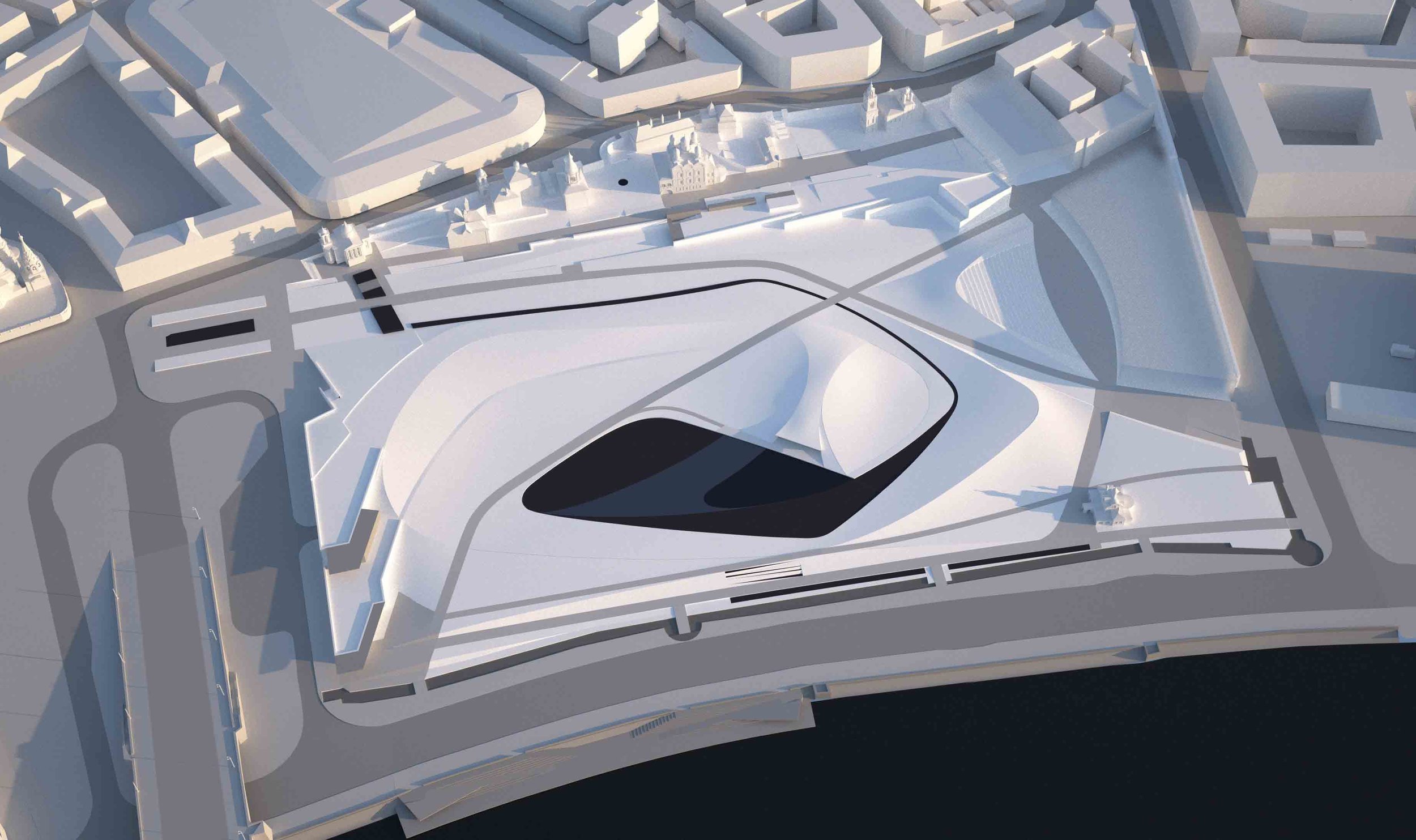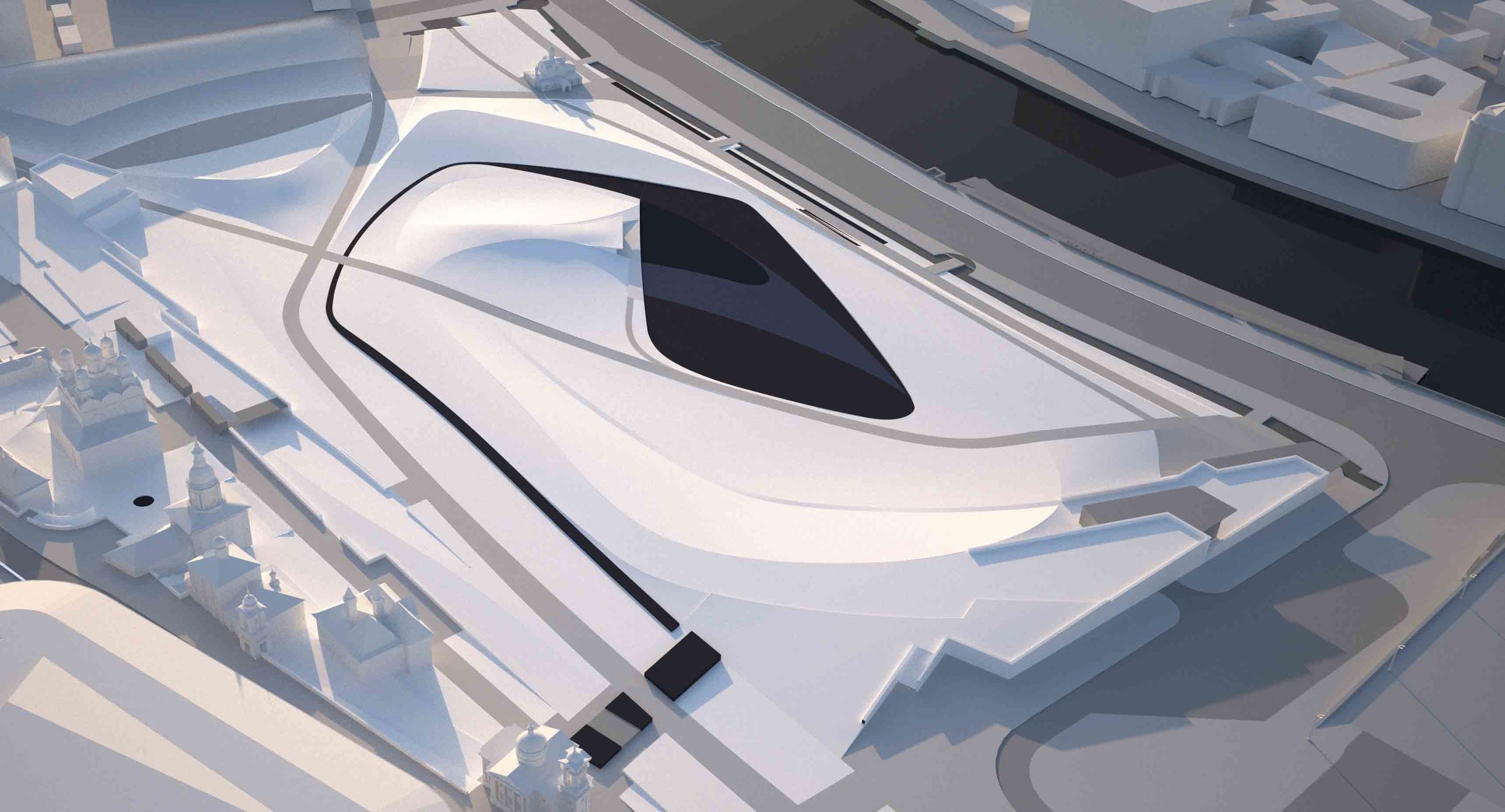Zaryadye Park Competition
Moscow, Russia | 2015 | Competition entry
Working in collaboration with Sauerbruch Hutton and ARUP, Gustafson Porter + Bowman led the concept design for the 120,000m2 Zaryadye Park in central Moscow as part of an international competition. Dating back to 1365 and situated close to Moscow’s Red Square, Zaryadye is the oldest trading settlement outside the Kremlin walls.
Our proposals celebrate the ‘two worlds’ that are held within Zaryadye Park: On a small-scale, residents and visitors can reflect on the past narratives and histories of the site, observing the intricately carved buildings that sit behind the park. On a larger scale, we observed that from the park one can enjoy incredible views over the Moskva river to the city’s skyline that speak of the resources and landscapes which propelled Moscow throughout its history. The design exploits Zaryadye’s riverside slope to its maximum and minimum topographical limits.
Our design incorporates viewing corridors which forge diagonal paths across the site to frame views of the historic buildings nearby. These paths also encourage the movement of visitors from the overpopulated entrances at Red Square and the Kitaigorod Metro towards the underappreciated riverside embankment entrances. By using the long diagonals of the park to distribute the elements of nature, the park fosters a sense of generosity while effectively integrating surrounding neighbourhoods into a whole greater than the sum of their parts. The design incorporates our research with Space Syntax, which showed that Moscow has an underdeveloped pattern of pedestrian movement in this area. By opening this central space up and redefining its access, differences can be united and the coherence of Moscow’s central communities is more convincingly defined.
Contemporary landscape architecture invites the city into layered relationships with nature, and the proposal for Zaryadye pulls distinctive scales, patterns, and elements from surrounding communities into the park to foster new synergies. A large-scale planted landscape in such a strategic position on the Moskva River can act as a green lung to ecological routes for flora, fauna, and people within Moscow’s centre. It has the potential to be a shared space where natural and human processes co-exist, overlap and interweave to create a healthy city environment.
Finally, aware of Moscow’s dramatic relationship with winter, the design of the park allows for a constant change in use throughout the seasons. In winter specialist markets can be held on the diagonal paths besides the Red Square entrance. Excess snow can be gathered from the main pedestrian diagonal routes and moved to the concert bowl to create a large winter playground for young children, with mini ski, snowboard and toboggan slopes created from the bowl’s amphitheatre form. During the winter the upper and lower water channels of the stream will be emptied of water and the lake will freeze over. Its northern ‘beached’ edge will allow the ice to slide and expand without breaking the edge.
Altogether, the new topography and distribution of architectural and landscape spaces at Zaryadye Park gives opportunities to reference the geographical scale of the region that surrounds Moscow and bring sustainable plant environments from those regions into the heart of the park and the city.
“The topography of the central bowl is orientated towards the river, borrowing the landscape of the river and pulling it into the park with the city as its backdrop. As one enters the park, the city disappears and you are completely immersed in the landscape.
Parks are truly the foundation of the sustainable city, and the site for Zaryadye Park is one of the most incredible in the world.”








